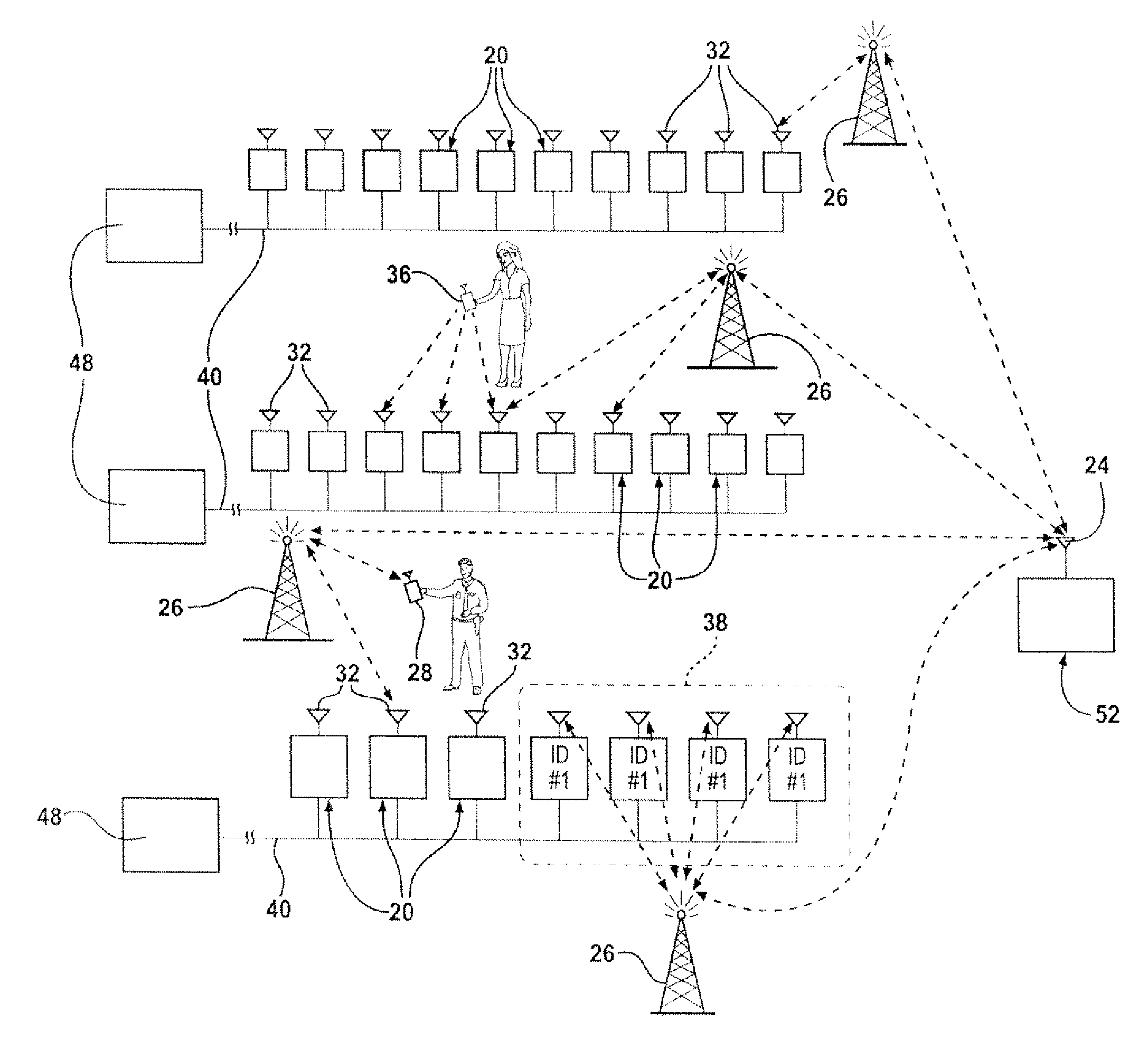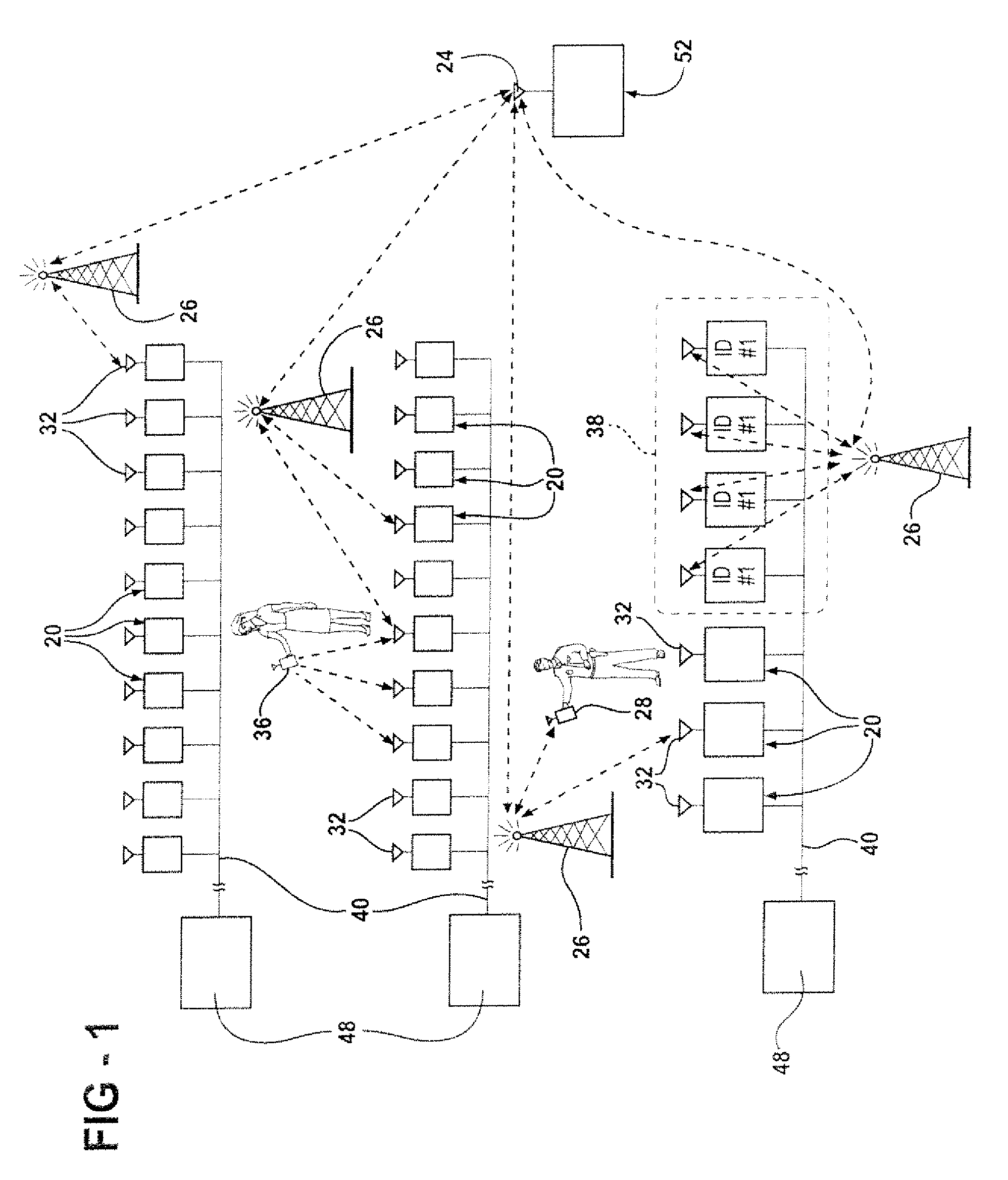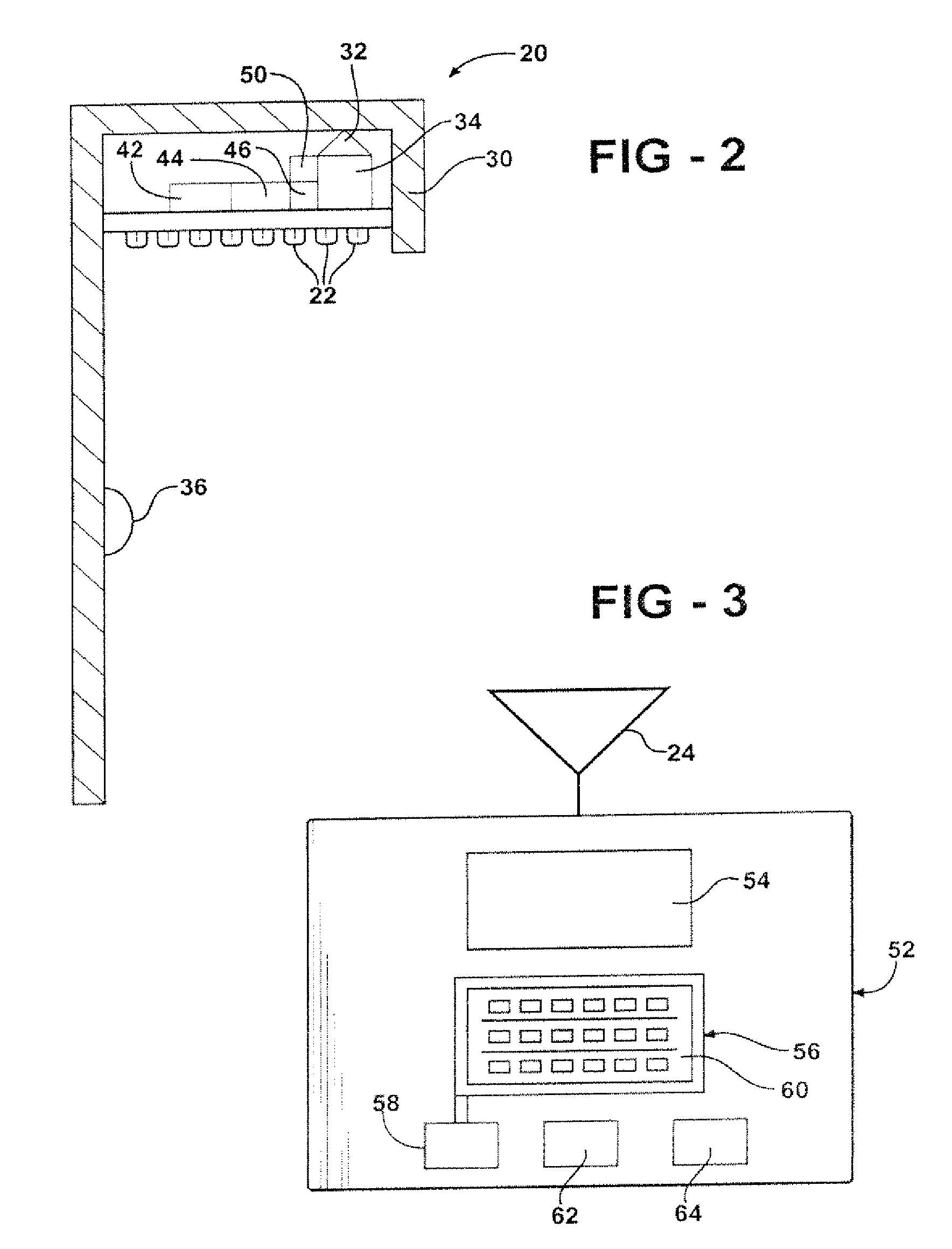Networked light control system
a networked light control and control system technology, applied in the direction of repeater circuits, line-transmission details, sustainable buildings, etc., can solve the problems of integrating a power line modem system, requiring a costly and cumbersome addition to existing infrastructure in geographical territory, and preventing interference with public safety personnel communications. , the effect of reliably compensating the cost of replacing
- Summary
- Abstract
- Description
- Claims
- Application Information
AI Technical Summary
Benefits of technology
Problems solved by technology
Method used
Image
Examples
Embodiment Construction
[0027]Referring to the Figures, a networked light control system used to transmit and receive radio signals to and from street light assemblies (20) including LEDs (22) is illustrated as spaced over a geographical territory defined by a central dispatch of public service personnel operating in the geographical territory. The system of the present invention employs existing infrastructure designed for transmitting radio signals on channels of frequencies licensed and reserved by the FCC for public safety communication and other exclusive local uses to control street light assemblies (20) located in a geographical territory such as a municipality, county, or university campus.
[0028]The system employs a central transceiver (24), operated by a governing organization in a geographical territory for transmitting and receiving voice and tones and digital packets on a first radio frequency reserved for public safety personnel. The central transceiver can be an existing transceiver located i...
PUM
 Login to View More
Login to View More Abstract
Description
Claims
Application Information
 Login to View More
Login to View More - R&D
- Intellectual Property
- Life Sciences
- Materials
- Tech Scout
- Unparalleled Data Quality
- Higher Quality Content
- 60% Fewer Hallucinations
Browse by: Latest US Patents, China's latest patents, Technical Efficacy Thesaurus, Application Domain, Technology Topic, Popular Technical Reports.
© 2025 PatSnap. All rights reserved.Legal|Privacy policy|Modern Slavery Act Transparency Statement|Sitemap|About US| Contact US: help@patsnap.com



